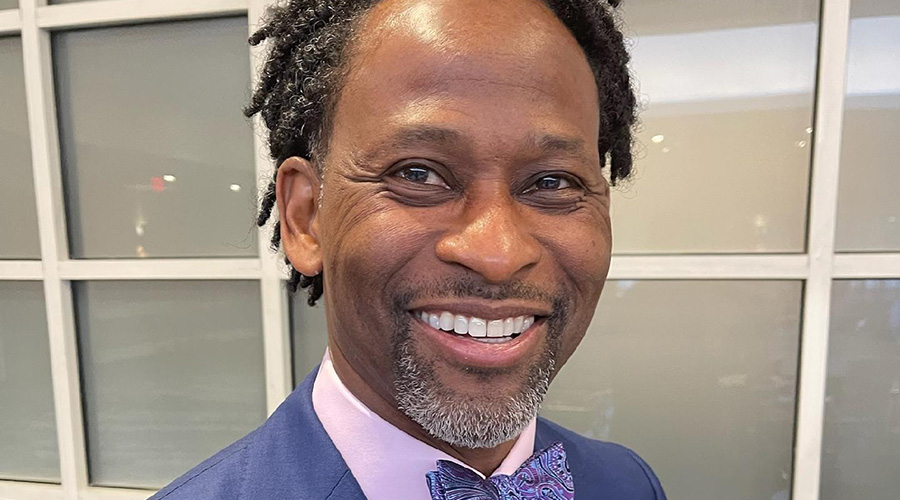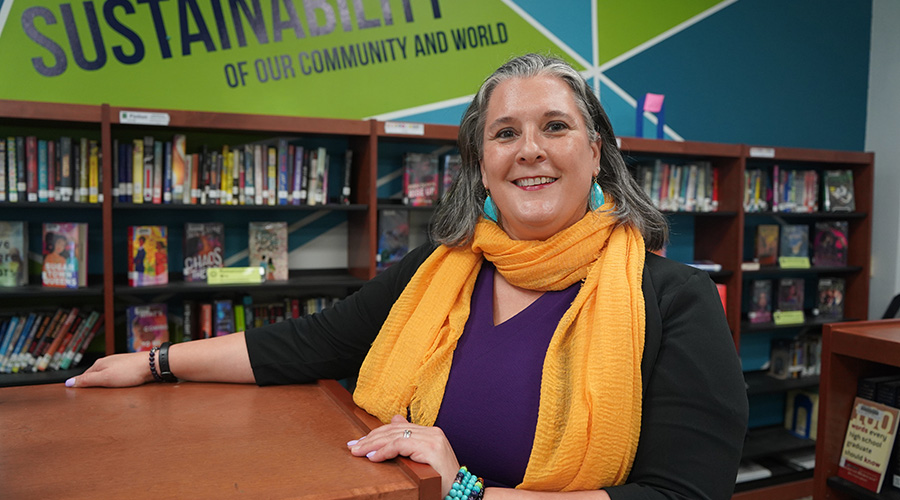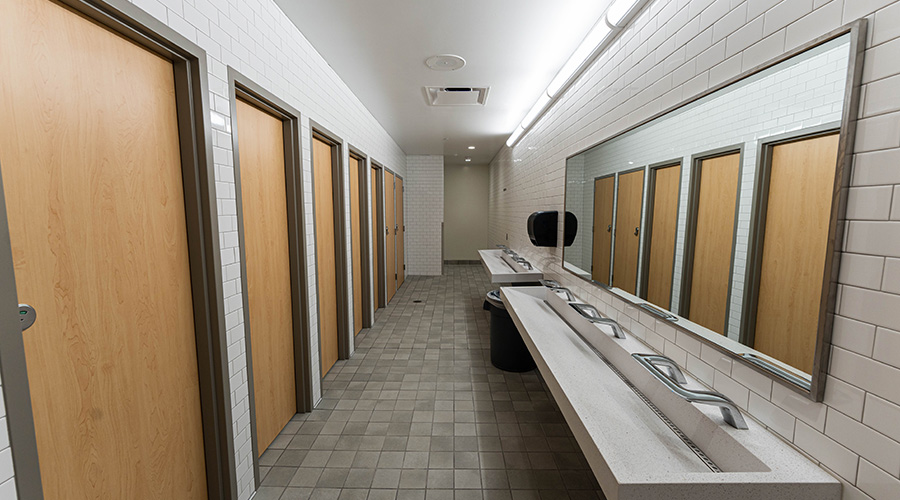Helping K-12 Schools on a National Scale
Willie Burroughs knows K-12 challenges and serves the Council of Great City Schools with extensive experience after leading Dallas and San Antonio school districts.
By Jake Meister, Contributing Writer
Willie Burroughs doesn’t see problems, but rather opportunities for improvement. That’s not because he’s an endlessly optimistic person with a quirky personality and an inability for cynicism, but rather a trained analytical and curious mind with an enthusiasm for bowties.
The Director of Management Services for the Council of the Great City Schools, Burroughs graduated Clemson University in 1992 with a Bachelor’s Degree in Industrial Engineering before working as a participant in a manufacturing training program followed by a six month officer basic course as a commissioned officer in the U.S. Army Reserve. From September 1995 to November 2002 he worked as a project/operations manager with Champion Aerospace in his home state of South Carolina. The job, which was conducted as he earned his MBA from Clemson, was focused on perfecting manufacturing processes.
Those skills would translate well to his new career in K-12 schools facility management.
From Aerospace to education
Burroughs found a groove with work that suited him at Champion Aerospace. While he appreciated public education — his wife was a Spanish teacher who instilled in him an appreciation for social consciousness — a career in K-12 facilities wasn’t something Burroughs really considered. However, a friend who worked at Aramark introduced Burroughs to key decision makers at Houston Independent School District (HISD). A unique fit was sensed, and in December 2002 he began working with the district as Aramark’s general manager of facility services.
Burroughs quickly realized the skills he honed as a collegiate and young professional in the private sector translated to any environment, including K-12 education.
“There really isn't a difference,” Burroughs says. “In K-12, we’re always in competition. Either we do the work better with internal resources or we outsource. What are our KPIs? What are the things that tell us that business is healthy?”
During six years with Aramark, Burroughs took his insatiable appetite to improve the systems for doing work and used it to lead maintenance, custodial, and grounds work at 50 of HISD’s schools. Work in the private industry taught him how to eye margin spreads. On the non-academic side of public education, he looked to improve the systems that had the greatest financial impact on the district. He developed and implemented training programs for technical staff to increase efficiency and effectiveness and conducted regular stakeholder engagements in order to identify and address customer needs. This led to more efficient operations, saving the school money it could reallocate into the classroom.
Fond of Burroughs’ methods and the results they produced, HISD hired him to be its general manager of construction services. In just less than two-and-a-half years, he provided strategic oversight for the implementation of the $1.2 billion facilities capital bond program, managed planning, design, and construction activities, and developed budgets for each project. The work earned Burroughs a promotion to HISD’s director of special projects. For three years, he developed and managed budgets to maximize the use of resources and implemented performance measurement tools — more exciting ways for him to work toward increased efficiency.
Always learning
Burroughs is constantly in pursuit of knowledge. He tells his son — now a senior in high school — that a person must always be learning, and that duty doesn’t decline as one advances through adulthood. So, as a lifelong learner, Burroughs accepted a job as the executive director of maintenance and facilities at the Dallas Independent School District.
The position required him to problem solve issues pertaining to maintenance, HVAC, grounds, environmental services, custodial work, capital improvement and energy management. There was so much to handle, but Burroughs yet again didn’t see a true problem in this.
“There are things that you’re not going to be an expert in or not know,” he says. “Surround yourself with people that are really bright and have enthusiasm in what they do. Through desire you obtain knowledge, which builds skill, which you then apply.”
In Burroughs’ role, HVAC was something to monitor regardless of season. He also says, “systems are going to be systems,” so the district’s aged infrastructure was always going to present an issue.
There’s also a constant need to stay on top of infection control practices, as evidenced by the fact the first Ebola patient diagnosed in the United States was treated, and later died, in Dallas in 2014. Regardless of the issue, Burroughs says the most important step is to provide customer care. How an operation engages with the end user can make all the difference.
The San Antonio Independent School District (SAISD) is also quite large, which is why Burroughs jumped at the opportunity to be its chief operations officer in the spring 2017. The job placed 1,600 employees under Burroughs, six of whom were direct reports. The bulk of the staff held custodial and child nutrition jobs, with about three of both varieties hired at each of the 100 campuses. It was in this job that Burroughs had the opportunity to learn from Pedro Martinez, now the CEO of Chicago Public Schools. Under Martinez’s leadership, the largest bond referendum in the history of the San Antonio district passed. Burroughs says one of the most crucial catalysts to that success was making teachers and all stakeholders part of the conversation. This gave Burroughs a vital lesson in effective communication, which he said evokes the proverb, “If you want to go fast, go alone, if you want to go far, go together.”
While the most important professional lesson Burroughs got in San Antonio related to communication, his most profound experience was realizing how much of an inspiration his presence was to many of the students in the district.
Having grown up in rural South Carolina, Burroughs didn’t attend schools flush with a bevy of resources, so his opportunities for unique learning experiences were capped. This alone connected him with students at SAISD. Sure, the district was much larger than the one Burroughs attended, but it was similar in that many of the students are impoverished. Another similarity — and perhaps this is the most important one — is that like many of the students, Burroughs is a person of color.
Burroughs says he likely appeared to students as “sort of a unicorn.” Here he was, a Black man in a suit, succeeding in one of the most important positions in the district.
“Seeing you can really impact the life of others and not even know it … Representation matters,” Burroughs says, adding that it was his teachers in South Carolina that inspired him to pursue higher education.
Representing K-12 on a national scale
As Burroughs was making a lasting impact in San Antonio, Bob Carlson worked part of his 29-year career at the Council of Great City Schools, which brings the nation’s 100 largest school districts together to discuss and learn best practices related to programming, operation, funding, and policy.
Burroughs has long held both Carlson and the Council in high esteem, so when its executive director, Dr. Raymond Hart, texted Burroughs with a request to chat, he was quick to respond. The Council offers a variety of different panels at different conferences, so Burroughs was thinking Hart might want him to speak at one such event. The idea of participating sounded great, but what Hart pitched to Burroughs was better. Carlson was going to be transitioning towards retirement, and Hart wanted him for the role.
“After I picked my jaw off the ground I thought, ‘Wow, you guys are calling me?’,” Burroughs says.
Now a little over two years into his role, Burroughs is having “the time of his life” supporting districts as they work in an exciting, but difficult, time in education. He gets to lead conferences and help put together whitepapers and best practice documents. Burroughs is also involved in the council’s partnership with the Consortium for School Networking, which with funding from Amazon Web Services, is putting together a checklist that will help K-12 schools use artificial intelligence (AI) to their advantage.
There are also the less joyful challenges. Many districts face declining enrollment, resulting in less funding, which in turn has many districts projecting hundreds of millions of dollars in deficits. Of course, Burroughs sees an opportunity to problem solve. One possible way to do this, he says, is by right-sizing building capacities, leading to greater efficiency, resulting in cost savings.
Other challenges include staffing shortages — bus drivers, special education teachers, IT workers — and talent retention. The supply chain is an issue, too. Burroughs says HVAC solutions are on ice with 18 months to years’ long waits for certain chillers. The wait to replace or upgrade school buses is similarly long. Looking ahead, AI presents opportunities to improve efficiency by taking certain tasks from workers — think number crunching and invoicing — leaving them to do something else that necessitates the human mind. Of course, with the prospect of this change comes resistance. Burroughs said the council will support districts that choose to embrace AI. Those who don’t, he said, will likely fall behind.
No matter the issue, industry experts believe Burroughs and the council gives schools a chance to overcome.
“[Burroughs] is keeping a strong connection to all district leadership around the country,” says Clarence Carson, an industry consultant and former chief facilities officer for Chicago Public Schools. “The council is increasing the participation of the members and maintaining membership. A big part of his draw is that he seeks to collaborate with others, which makes him a gem in the industry.”
Jake Meister is a freelance writer in Milwaukee.
Related Topics:












